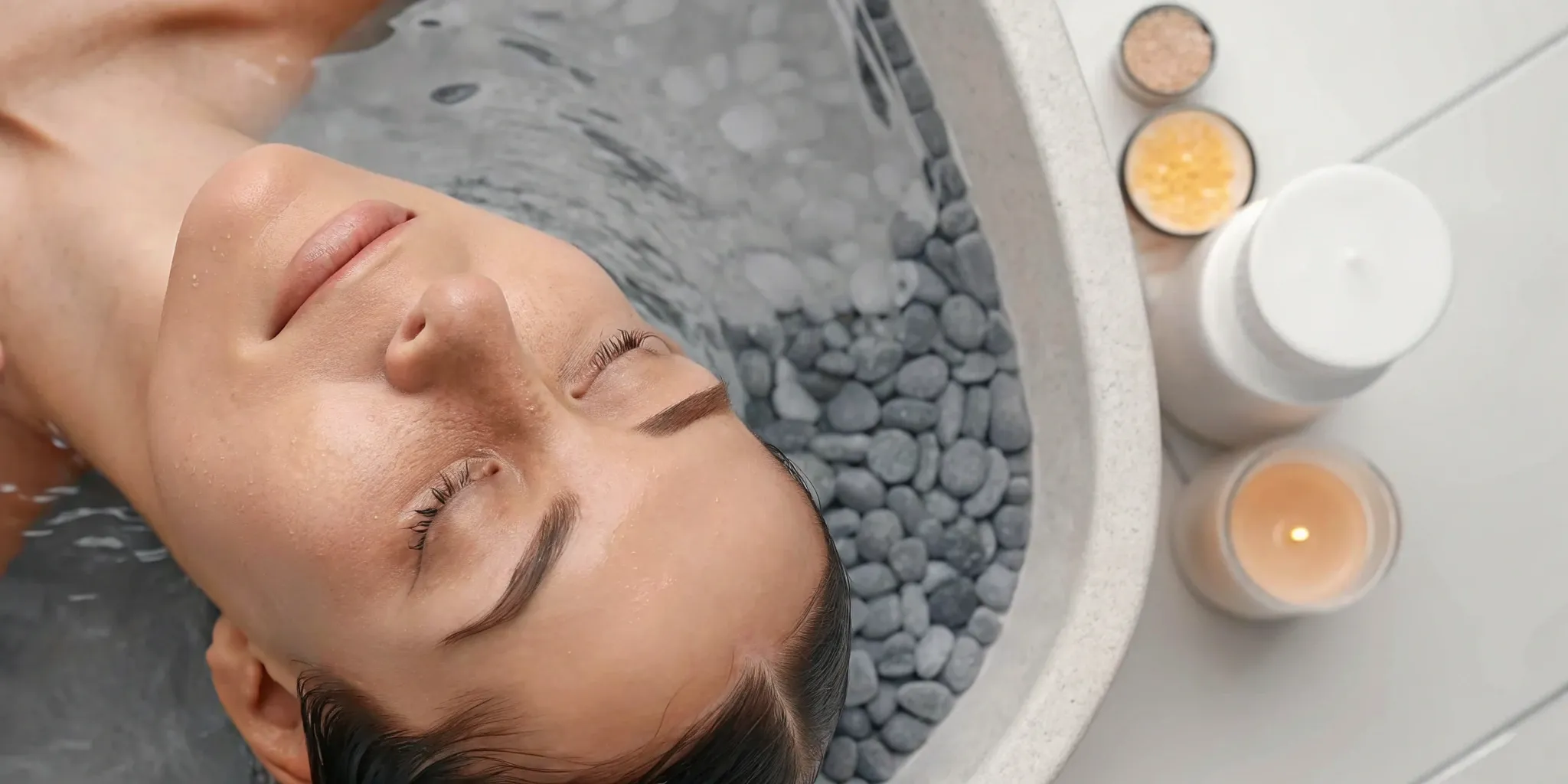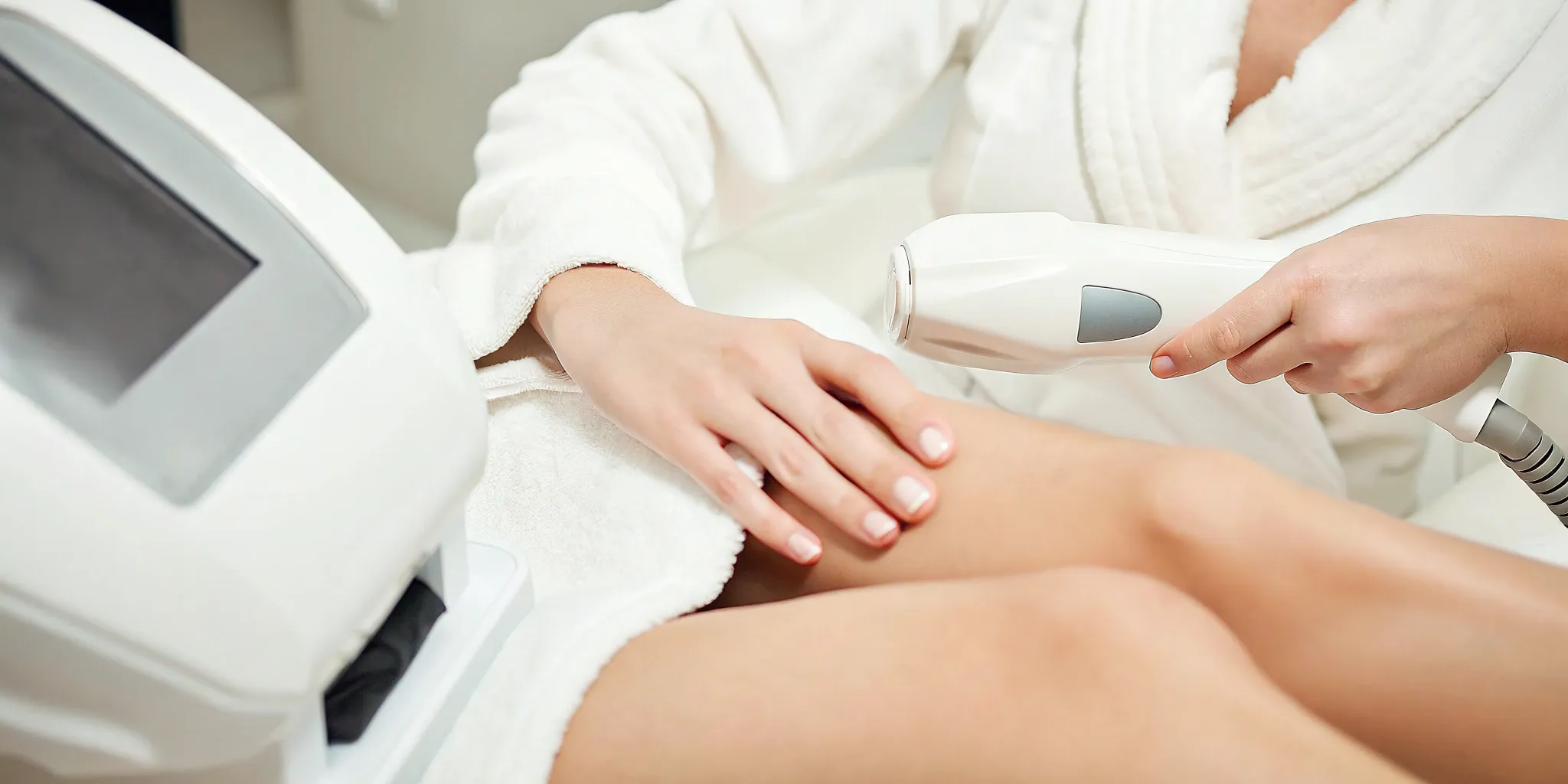Ready for a fresh start? Tattoo removal offers a chance to reclaim your skin and say goodbye to unwanted ink. Whether it’s a symbol of a past you’re ready to leave behind or simply a design you no longer connect with, tattoo removal is a personal journey. This guide provides a comprehensive overview of the process, offering valuable insights and practical advice to help you make informed decisions. We’ll explore the various methods available, focusing on the science behind laser tattoo removal and the factors that influence its effectiveness. We’ll also discuss pain management, potential risks, aftercare procedures, and the importance of choosing a qualified provider. If you’re considering tattoo removal, this guide is your trusted resource for navigating the process with confidence.
Key Takeaways
- Laser tattoo removal offers the best results: It’s the most precise and effective way to remove unwanted ink, minimizing scarring and skin damage.
- Tattoo removal requires multiple treatments: Think of it as a process, not a one-time event. Several sessions are needed for optimal fading, spaced weeks apart to allow your skin to heal.
- Finding the right provider is essential: Select a qualified and experienced medical professional specializing in laser tattoo removal for the safest and most effective outcome.
What is Tattoo Removal?
Tattoo removal is the process of eliminating unwanted tattoos. While getting a tattoo is a significant decision, removing one is often more complex, time-consuming, and expensive. Think of it as a gradual lightening of the tattoo over multiple sessions, rather than a one-time erasure. The most common methods include laser removal, surgical excision, and dermabrasion, with laser tattoo removal typically being the preferred choice for its effectiveness and precision. This method uses pulses of light energy to break down the tattoo ink into tiny particles, which your body’s immune system then gradually removes. The field of tattoo removal has seen significant advancements, making it a viable option for those looking for a fresh start. If you’re considering tattoo removal, visit our tattoo removal page to learn more about the process.
Tattoo Removal Methods Explained
Several methods exist for removing unwanted tattoos, each with its own pros and cons. Understanding these different approaches can help you make an informed decision when it’s time to say goodbye to that ink. At Ultimate Image MedSpa, we prioritize safe and effective tattoo removal, and we’re here to guide you through the process. Let’s explore the most common techniques:
Laser Removal: The Gold Standard
Laser tattoo removal is the most common and effective method for removing tattoos. This technique uses Q-switched lasers, which deliver intense pulses of light energy to break down the tattoo ink particles in the skin. These fragmented particles are then naturally processed and eliminated by your body’s immune system. Because different wavelengths of light target specific ink colors, this method offers precise removal with minimal impact on the surrounding skin. While multiple sessions are typically needed for complete removal, laser treatment remains the gold standard due to its effectiveness and precision. Learn more about our laser tattoo removal services.
Surgical Excision: For Smaller Tattoos
Surgical excision involves physically removing the tattooed skin with a scalpel. After the tattooed area is excised, the surrounding skin is stitched together. This method is generally best suited for smaller tattoos due to the nature of the procedure. While surgical excision can offer a faster removal process than laser treatment for small tattoos, it does result in a scar, which may be a factor in your decision-making process. This method is less common than laser removal, particularly for larger tattoos, due to the scarring and potential for skin irregularities. If you’re considering tattoo removal, consult with a qualified professional to discuss the best approach for your individual needs.
Dermabrasion: An Older Technique
Dermabrasion is a more abrasive method that essentially sands down the skin to remove the tattoo ink. Using a specialized device, the outer layers of skin are removed, taking the tattoo pigment with it. While dermabrasion was used more frequently in the past, it’s less common now due to advancements in laser technology. Laser tattoo removal generally offers more predictable results and fewer side effects compared to dermabrasion. Additionally, dermabrasion can be less effective on deeper or more vibrant tattoos. For most patients, laser removal offers a more precise and less invasive approach.
How Laser Tattoo Removal Works
The Science Behind Laser Technology
Laser tattoo removal typically uses Q-switched lasers, which deliver intense, short bursts of light energy. These lasers use different light wavelengths to target various ink colors. For example, darker inks like black absorb light more effectively and are generally easier to remove than lighter colors like yellow or green. The laser energy shatters the tattoo ink into tiny particles, which your body’s immune system then gradually removes. Think of it like breaking a rock into pebbles—smaller pieces are much easier to carry away. Different types of Q-switched lasers exist, each tailored to target specific ink colors effectively.
Factors Affecting Laser Removal Effectiveness
Several factors influence how effective laser tattoo removal will be. Your skin tone plays a role, as does the type of ink used in your tattoo. Professional tattoo inks often respond better to treatment than homemade or amateur inks. The depth of the ink also matters—deeper tattoos require more sessions. Ultimately, multiple treatments are almost always necessary to achieve significant fading. The size and location of the tattoo can also affect the removal process. For example, tattoos located on areas with less blood circulation, like the feet and ankles, may take longer to remove. Additionally, some colors are more challenging to remove completely, and factors like layering or scarring can also influence the outcome.
What Happens During a Tattoo Removal Session?
This section walks you through a typical tattoo removal session at Ultimate Image MedSpa, from the initial consultation to post-treatment care.
Your Pre-Treatment Consultation
Before we start any tattoo removal treatment, we’ll schedule a consultation. This gives us a chance to assess your tattoo and discuss the best removal strategy for your skin and ink. We’ll consider factors like your tattoo’s size, location, colors, and your skin type. This consultation is also the perfect opportunity to ask questions and learn more about the process. We want you to feel completely comfortable and informed before beginning treatment. Schedule a consultation to discuss your tattoo removal goals.
The Removal Process
Most tattoo removal treatments use laser technology. During the procedure, the laser emits pulses of light that target the tattoo pigment, breaking it into smaller particles. Your body’s immune system then gradually eliminates these fragments, causing the tattoo to fade. You’ll likely need multiple sessions spaced several weeks apart for the best results. The exact number of sessions depends on your individual tattoo.
Post-Treatment Care
After each session, we’ll provide you with detailed aftercare instructions. Following these guidelines is crucial for minimizing potential side effects, like infection or scarring, and ensuring optimal results. Proper aftercare also promotes efficient healing between treatments. We’re committed to supporting you throughout your entire tattoo removal journey at Ultimate Image MedSpa.
Managing Pain and Discomfort
Comparing Pain Levels to Getting a Tattoo
Let’s talk about everyone’s biggest question: does tattoo removal hurt? Most people say it feels similar to getting the tattoo itself—some describe it as a sunburn or the snap of a rubber band against your skin. Everyone’s pain tolerance is different, so your experience might not be the same as someone else’s. Knowing what sensations to expect can help ease any anxiety about the tattoo removal process.
Pain Management Options
A skilled dermatologist can make the process much more comfortable. At Ultimate Image MedSpa, we prioritize your comfort and offer several pain management techniques. We might suggest a numbing cream, which can significantly reduce discomfort during the procedure. Icing the area beforehand can also help. Plus, simple relaxation techniques like deep breathing or listening to music can make a real difference. We’ll work with you to find the best approach for your needs and ensure a comfortable experience during your tattoo removal treatment. Contact us to discuss options and learn more.
Potential Risks and Side Effects
Deciding to remove a tattoo is a big step. Understanding the potential risks and side effects—both common and rare—is crucial for making an informed decision. While laser tattoo removal is generally safe, it’s essential to have realistic expectations.
Common Side Effects
Most people experience some temporary side effects after laser tattoo removal. These are typically mild and resolve on their own within a few weeks. You might notice lighter or darker spots in the treated area. Some temporary textural changes to the skin are also possible. Many patients compare the sensation during treatment to the snapping of a rubber band against the skin or a mild sunburn afterward. While not common, some blistering can occur. It’s important to avoid picking at any blisters to prevent infection or scarring. For more information on what to expect, check out our laser tattoo removal page.
Rare but Serious Complications
While serious complications are rare, it’s important to be aware of them. As with any medical procedure, there’s a small risk of infection. Although less common, scarring or permanent changes to skin texture are also possibilities. Allergic reactions to the ink or numbing cream are rare but can occur. Choosing a qualified and experienced provider, like those at Ultimate Image MedSpa, significantly reduces these risks. We prioritize patient safety and provide thorough pre- and post-treatment care instructions. If you have any concerns about potential risks, don’t hesitate to contact us to schedule a consultation. We’re happy to discuss your individual case and answer any questions.
Time and Cost of Tattoo Removal
So, you’re ready to say goodbye to that unwanted ink. A big factor in your decision is likely the time and money involved. Let’s break down what you can expect.
Number of Sessions Required
Tattoo removal isn’t a one-and-done process. It typically requires multiple sessions, spaced several weeks apart. This gradual approach is essential for breaking down the ink particles effectively while allowing your skin to heal between treatments. Think of it like chipping away at a stone sculpture – it takes time and precision. Most people find themselves needing anywhere from six to eight sessions, sometimes more, depending on the tattoo. For more information on the process, check out our tattoo removal services.
Factors Influencing Treatment Duration
Several factors influence how many tattoo removal sessions you’ll need. The size and complexity of the tattoo play a significant role. A small, simple design will naturally require fewer sessions than a large, intricate, or multicolored tattoo. The age of the tattoo also matters; older tattoos often fade more easily than newer ones. Your individual skin type and the type of ink used also affect the treatment process. Some inks respond better to laser treatment than others. All these variables will be considered during your consultation to create a personalized treatment plan. You can learn more about the factors affecting laser tattoo removal on our services page.
Understanding the Cost of Removal
The cost of tattoo removal varies, primarily based on the size and complexity of the tattoo. You can generally expect to pay somewhere between $200 and $500 per treatment session. Given that most people require multiple sessions, the total cost can average around $3,500, sometimes more for larger or more complex pieces. It’s worth noting that insurance typically doesn’t cover tattoo removal, as it’s considered a cosmetic procedure. For a more precise estimate for your specific tattoo, contact us to schedule a consultation and discuss your treatment goals. We can give you a clearer picture of the expected cost and timeline.
Aftercare and Recovery
Proper aftercare is essential for optimal healing and minimizing potential side effects after tattoo removal. Following these guidelines will help ensure a smooth recovery process.
Immediate Post-Treatment Care
Immediately following your laser tattoo removal session at Ultimate Image MedSpa, the treated area might feel similar to a sunburn. You can expect some redness, swelling, and possibly minor blistering. Your practitioner will provide you with specific instructions, but here are some general guidelines:
- Keep it clean and dry: Avoid submerging the treated area in water (baths, pools, hot tubs) for at least two weeks. Cleanse the area gently with a mild soap and water, patting it dry. You may also be advised to apply a thin layer of antibiotic ointment.
- Hands off: Resist the urge to pick, scratch, or rub any blisters or scabs that may form. Interfering with the natural healing process can increase the risk of infection and scarring. Let those scabs fall off naturally. Check out this article on laser tattoo removal aftercare for more tips.
- Dress the area (if necessary): Your practitioner may recommend covering the treated area with a bandage for a short period, especially if there’s any oozing or weeping. Follow their instructions carefully regarding bandage changes.
Long-Term Skin Care After Removal
Once the initial healing phase is complete (usually a few weeks), your focus shifts to protecting the treated skin and promoting healthy regeneration.
- Sun protection is key: The treated skin will be particularly sensitive to the sun, so diligent sun protection is crucial. Apply a broad-spectrum sunscreen with an SPF of 30 or higher every day, even on cloudy days. This helps prevent discoloration and promotes even healing. The Mayo Clinic offers helpful information on tattoo removal and sun protection.
- Keep your skin hydrated: Regularly moisturizing the treated area can help soothe the skin and support the healing process. Choose a fragrance-free, hypoallergenic moisturizer to minimize irritation. Astanza provides further insights into long-term care after tattoo removal.
- Watch for changes: While some changes in skin texture or color are expected during the healing process, it’s important to be vigilant. If you notice anything unusual or concerning, such as excessive redness, swelling, or changes in pigmentation, contact your dermatologist or the professionals at Ultimate Image MedSpa for guidance. We’re here to support you throughout your journey.
Choosing the Right Provider
Finding the right provider is just as important as choosing the right tattoo removal method. It’s a decision that significantly impacts the effectiveness, safety, and overall success of the procedure. Take your time, do your research, and don’t hesitate to ask questions. Your skin’s health and the final outcome depend on it.
Qualifications to Look For
First and foremost, confirm your provider is a board-certified dermatologist or a medical professional with specific training and experience in laser tattoo removal. This ensures they possess the necessary medical knowledge to understand your skin’s unique needs and handle any potential complications. Always consult a dermatologist before starting any removal process—they can offer expert, personalized advice and ensure safe practices. Don’t rely on DIY removal methods, which can lead to unwanted results.
Beyond certifications, thoroughly research practitioners in your area. Look for providers with a proven track record, extensive experience with various tattoo types and ink colors, and positive patient reviews. Don’t base your decision solely on price. A lower cost might mean less advanced technology or a lack of experience. Remember, you’re investing in your appearance, so prioritize quality and expertise. Consider checking resources like Bared Monkey for insights on evaluating cost versus qualifications.
Questions to Ask Before Treatment
Once you’ve identified a few potential providers, schedule consultations. This is your opportunity to ask important questions and get a feel for their approach. Start by discussing your desired outcome and any concerns you have. A qualified provider will take the time to assess your tattoo, explain the process, and create a personalized treatment plan. The Mayo Clinic emphasizes the importance of consulting a dermatologist to discuss options and determine the best approach for your specific tattoo.
Inquire about the specific laser technology they use. Different lasers target different ink colors, and the latest technology often leads to better results with fewer sessions. Also, ask about their experience with similar tattoos, potential side effects, and aftercare procedures. A transparent and informative consultation is a good sign you’ve found a provider who prioritizes your well-being and satisfaction. For more information on laser technology, explore resources like Astanza.
Is Tattoo Removal Right for You?
Deciding to remove a tattoo is a personal choice. This section helps you explore your motivations, weigh the pros and cons, and set realistic expectations. At Ultimate Image MedSpa, we understand this is a big decision, and we’re here to support you. Contact us to schedule a consultation and discuss your individual needs.
Considering Your Motivations
People seek tattoo removal for all sorts of reasons. Maybe you regret a youthful choice, the tattoo no longer reflects who you are, or it reminds you of a past relationship. Perhaps your career now requires a more conservative look. Understanding why you want the tattoo removed is the first step in deciding if it’s the right path. Clarity around your goals is key before starting the process.
Weighing the Pros and Cons
Like any medical procedure, tattoo removal has upsides and downsides. It offers the freedom to remove unwanted ink, allowing you to present yourself the way you want. It can be empowering to reclaim your skin and feel confident in your appearance. However, tattoo removal is generally more complex, time-consuming, and expensive than getting the tattoo. Laser tattoo removal, while often the best method, isn’t a quick fix. It requires multiple sessions and has potential side effects like scarring, infection, or skin discoloration. At Ultimate Image MedSpa, we prioritize client safety and satisfaction. We’ll discuss all potential risks and side effects with you during your consultation. Learn more about our tattoo removal services.
Setting Realistic Expectations
While laser technology has greatly improved tattoo removal, it’s crucial to have realistic expectations. Complete removal isn’t always possible, and success depends on several factors. These include your skin type and color, the ink used, the tattoo’s age, and how deep the ink sits. The removal process often requires multiple sessions spaced weeks apart, and some permanent skin alteration is possible. We encourage you to explore our services to learn more about the treatments we offer at Ultimate Image MedSpa. We’re committed to providing you with the best possible results and helping you achieve your aesthetic goals.
Related Articles
- Laser Tattoo Removal at Home: Safe or Risky? – Ultimate Image MedSpa
- Laser Tattoo Removal Treatment In Texas | Erase Your Ink
- Laser Tattoo Removal | Everything You Need to Know
Frequently Asked Questions
Does tattoo removal hurt?
Most people describe the sensation as similar to getting a tattoo, like a rubber band snapping against the skin. We offer various pain management options at Ultimate Image MedSpa, including numbing creams and icing, to ensure your comfort during the procedure.
How does laser tattoo removal work?
Lasers emit short bursts of light energy that target specific ink colors, breaking the ink into tiny particles. Your body’s immune system then naturally removes these particles over time, causing the tattoo to fade.
How many sessions will I need?
The number of sessions varies depending on factors like the tattoo’s size, color, age, and your skin type. Most people require multiple sessions spaced several weeks apart, typically between six and eight, sometimes more.
What are the potential side effects?
Common side effects include temporary redness, swelling, and minor blistering. While rare, more serious risks include infection, scarring, or changes in skin pigmentation. We’ll discuss these in detail during your consultation.
How much does tattoo removal cost?
The cost depends primarily on the tattoo’s size and complexity. Each session typically ranges from $200 to $500, with the total cost averaging around $3,500 or more for larger or more intricate tattoos. We’ll provide a personalized cost estimate during your consultation.







